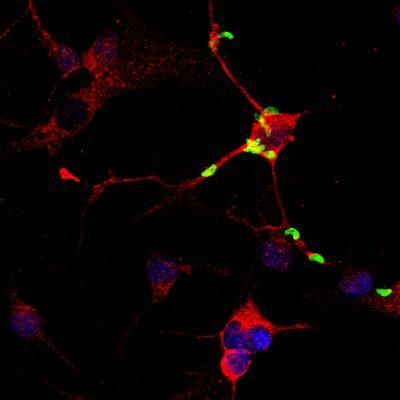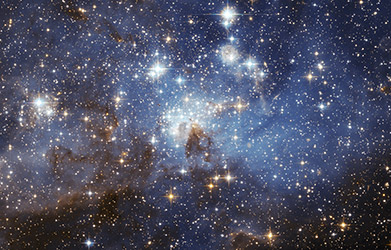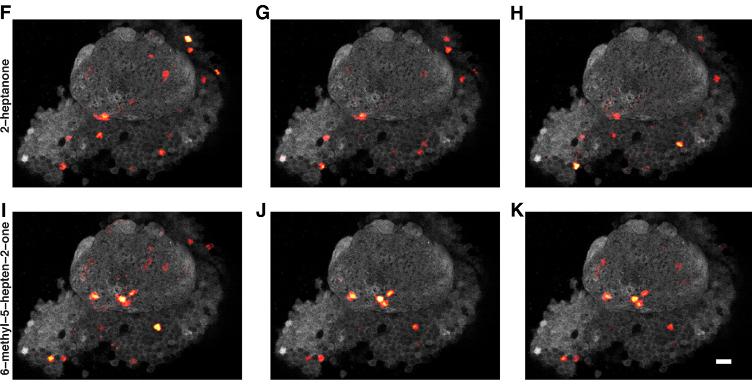
© I-Ping LeeIndividual toxoplasma parasites (green) are shown invading neurons (red) grown in a petri dish in the lab. The blue areas are fluorescently tagged cell nuclei.
When a male rat senses the presence of a fetching female rat, a certain region of his brain lights up with neural activity, in anticipation of romance. Now Stanford University researchers have discovered that in male rats infected with the parasite Toxoplasma, the same region responds just as strongly to the odor of cat urine.
Is it time to dim the lights and cue the Rachmaninoff for some cross-species canoodling?
"Well, we see activity in the pathway that normally controls how male rats respond to female rats, so it's possible the behavior we are seeing in response to cat urine is sexual attraction behavior, but we don't know that," said Patrick House, a PhD candidate in neuroscience in the School of Medicine. "I would not say that they are definitively attracted, but they are certainly less afraid. Regardless, seeing activity in the attraction pathway is bizarre."
For a rat, fear of cats is rational. But a cat's small intestine is the only environment in which Toxoplasma can reproduce sexually, so it is critical for the parasite to get itself into a cat's digestive system in order to complete its lifecycle.
Thus it benefits the parasite to trick its host rat into putting itself in position to get eaten by the cat. No fear, no flight -- and kitty's dinner is served.



